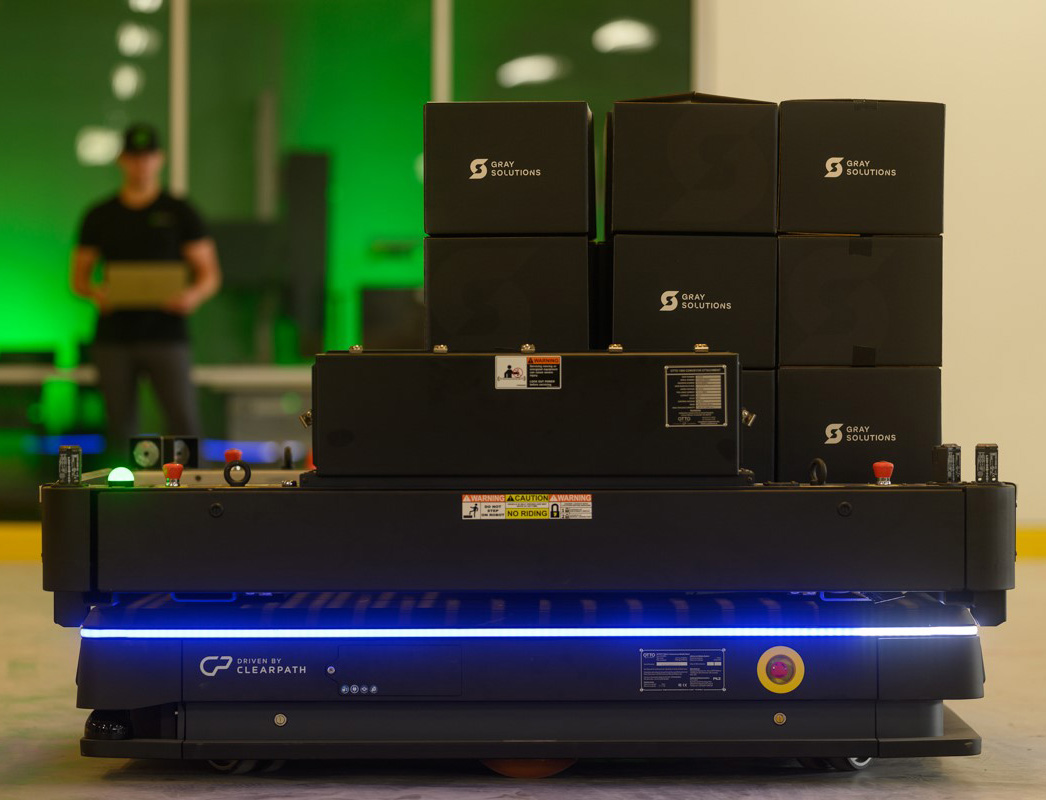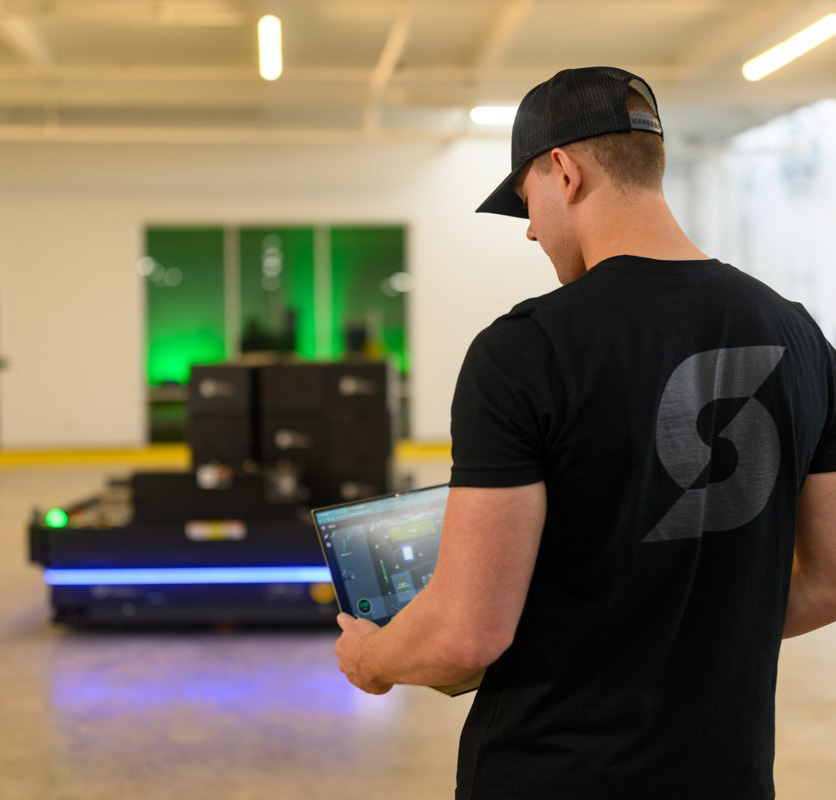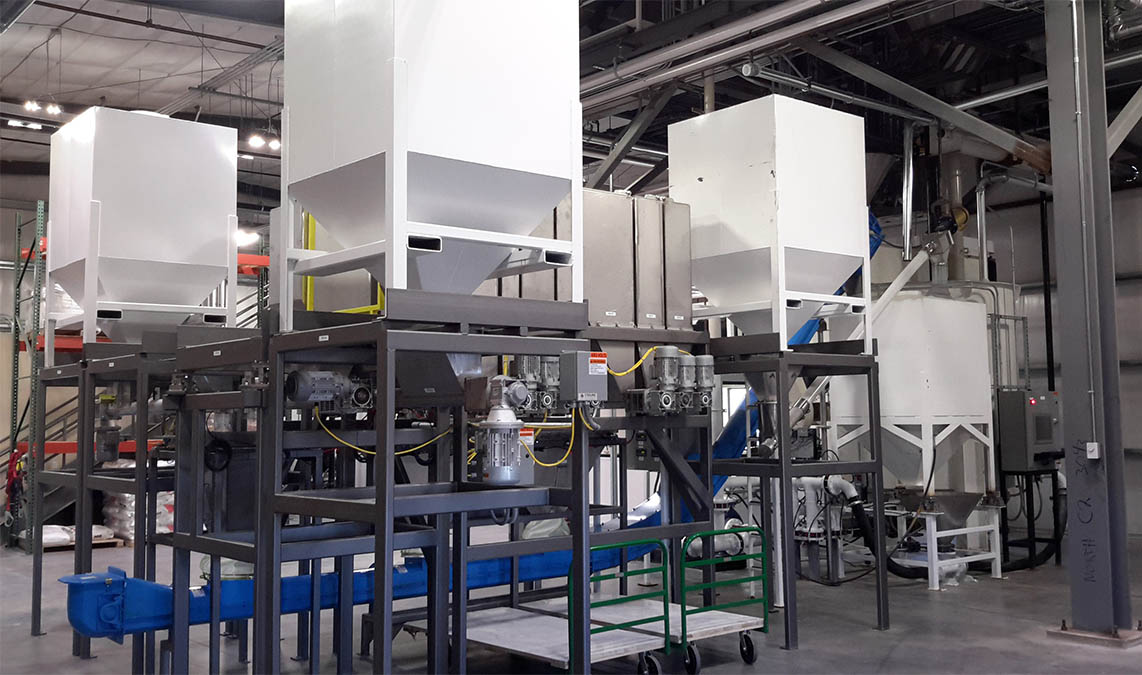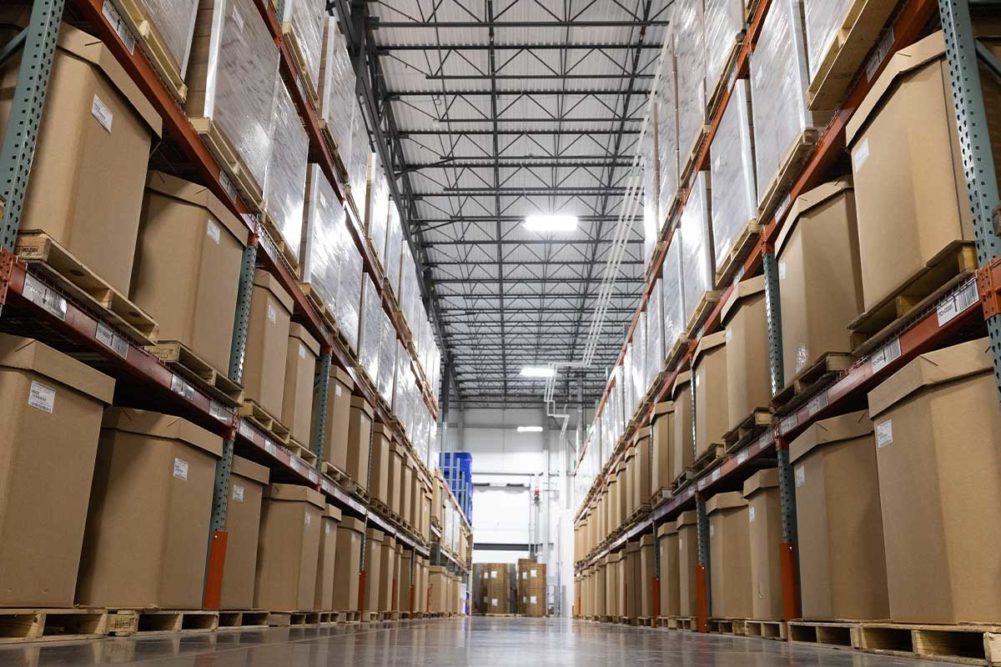This article was published in the March 2024 issue of Pet Food Processing. Read it and other articles from this issue in our March digital edition.
Efficiency in pet food processing operations can be tied directly to the manner in which materials are handled and transferred throughout the plant. Therefore, material handling systems are essential components of any operation, from receiving through ingredient disbursement to the final stages of production and packaging.
Joe Lewis, marketing manager for the Sterling, Ill.-based Sterling Systems & Controls, Inc., noted each pet food manufacturer has different objectives and requirements due to the myriad of differences in products being produced, as well as the differing approaches each processor takes to making their pet food and treats.
“One trend continues to be the need for material handling suppliers to be increasingly flexible in their ability to custom engineer high-quality systems,” he said. “This is especially true in the weighing and batching areas.”
More important than this custom engineering trend is that of data management.
“Bulk material handling designers and suppliers must increasingly be able to collect, manage and utilize data about the pet food manufacturer’s process that is gathered and used in the material weighing and ingredient batching, blending and further processing,” Lewis said.
“Data is the new gold. Gathering and storing that data is great, but that needs to be easily accessible and comprehendible,” said Bryan Reinecke, NorthWind Technical Services.
An example is the ever-increasing requirements in the lot tracking and validation of ingredients and recipes. This can be a daunting task. The engineer and supplier of these bulk material systems must have expertise in data management tools and the use of data to increase efficiency and profitability.
“Another rising trend is the use of AI (artificial intelligence), especially the subset of machine learning,” Lewis said. “The impact of this will be felt in many areas of bulk material handling systems, especially where managing ingredients, batching and equipment maintenance is concerned. One trend is the use of AI to turn preventive maintenance into predictive maintenance, thereby possibly resulting in the virtual elimination of machine maintenance by adapting its operation to extend life without maintenance. Exceptions may exist, but this trend is real and continued advancements will continue. It is the future of process equipment and automation.”
Diaz McDaniel, senior manager, process for Lexington, Ky.-based Gray Solutions, noted from a dry ingredient material handling standpoint, he has seen increased use of pneumatic transfer systems due to the hygienic and food safety standards customers are demanding, along with increased energy efficiency based upon sustainability goals.

Autonomous mobile robots (AMRs) and automated guided vehicles (AGVs) can be valuable tools to help with ingredient and material transfer around a pet food processing plant.
|“The intelligence behind the AMRs (autonomous mobile robots) and AGVs (automated guided vehicles) continues to increase and offers more flexibility for deeper integration and customization for customer needs,” he said. “The hygienic design standards and energy efficiency, along with the level of automation intensity, continue to increase. The systems are becoming smarter with more feedback and data analytics being provided, all to reduce downtime and increase overall effectiveness.”
The need for traceability has also evolved over the years, which has required more robust computer hardware in order to store and view batch data for months after the finished product has been produced.
NorthWind Technical Services, Sabetha, Kan., offers customers a customized automation system from raw material unloading — including dry materials, liquids and meats — all the way up to packaging. Services include PLC (programmable logic controller) programming and HMI (human machine interface) graphics for receiving ingredients, milling, batching, meat processing, extrusion, drying, coating and cooling.
In addition, NorthWind developed material and recipe management software, BatchLOGIX, which can seamlessly interface with the PLCs and HMIs of those processes to capture receiving materials and lots and show how those are consumed within the process.
“Data is the new gold,” said Bryan Reinecke, senior project manager for the company. “Gathering and storing that data is great, but that needs to be easily accessible and comprehendible. BatchLOGIX comes with various reports out of the box for accessing batch/campaign reports, material/lot reports, etc.”
In addition to the standard reports, the software development team can create custom reports to meet the customers’ needs.
“Another recently developed feature that can be added onto our standard offering is our Manufacturing Execution System, which provides customizable dashboards to provide key performance indicators at a glance ranging from up/downtime, material rates and yield for each line,” Reinecke said.

By helping to transfer materials from point-to-point around a processing facility, AGVs can save on labor needed to perform certain tasks in plant operations.
|For pet food processing, Gray Solutions offers feasibility analysis, conceptual design, system sizing, integration, startup, and commissioning services of various systems ranging from dry and liquid ingredient transfer systems through AGVs and AMRs.
“The systems used vary based on customer needs. Examples include large- and small-scale pneumatic transfer systems delivering ingredients to batching systems of varying sizes and complexity based upon product requirements, to pallet-based, single-ingredient delivery systems for frozen materials,” McDaniel said.
A few examples of unique system flexibility that allows AMRs to operate in a dynamic sloped wet wash down environment include the tooling interface that can be customized to accommodate varying line-size conveyor heights.
“Grouping the AMRs at varying conveyor heights allows us to maximize travel time and throughput and maintain overall system uptime,” McDaniel said.
“Grouping the AMRs at varying conveyor heights allows us to maximize travel time and throughput and maintain overall system uptime,” said Diaz McDaniel, Gray Solutions.
Sterling Systems & Controls, Inc. has more than 50 years of experience with technologies and application processes in the areas of material weighing, ingredient batching, process controls/automation, bulk bag processing, liquid dosing, preventive maintenance planning and remote supervisory control. Its custom engineered bulk material handling systems differ in the control and automation of the systems.
“The bulk material handling systems we provide excel in the material weighing and ingredient batching areas; the controls and automation of these systems are what have evolved the most,” Lewis said. “Control software is more flexible, faster and provides superb data management and reporting capabilities, as never before. AI, including machine learning, is set to be a part of the next generation controls for bulk material handling as well, while still now in its infancy.”
Material mapping
Material mapping starts with the receipt of ingredients, whether from raw materials brought into the plant or from another processing system upstream filling storage bins to be consumed during processing. For NorthWind, the mapping is assisted through its management software.
“Upon receipt of ingredients, the details of that ingredient will be stored within a BatchLOGIX virtual bin, which contains the name, lot and amount,” Reinecke said. “Typically, those details will be compared to what is currently in that virtual and physical bin location prior to actually receiving those ingredients, this assists with prevention of material cross-contamination (i.e. Ingredient ABC unloaded on top of Ingredient 123).”
A benefit of material mapping into BatchLOGIX, he continued, is the ability to have dynamic source locations.
“BatchLOGIX is also used for recipe management and campaign scheduling,” Reinecke said. “When a recipe is created and loaded, BatchLOGIX will cross reference the ingredient/bin locations to confirm there is an ingredient available for the desired recipe and transfer that information to the PLC to control the delivery equipment for the correct ingredient.”

Material handling systems in pet food processing operations require flexibility since processing environments vary from one plant to the next.
| Source: Sterling Systems & Controls, Inc.
Proper care and maintenance
Systems continue to evolve and improve over time, so the maintenance requirements tend to increase in complexity, but stay well within the reach of strong maintenance technicians with the proper training.
Equipment with wear and moving parts are subject to maintenance requirements. However, Lewis noted preventive maintenance planning software applications can make maintenance a forethought rather than an afterthought.
“This increases uptime, an objective that operations and maintenance people have for their bulk handling systems,” he said. “But the future is predictive maintenance. This will be achieved with the introduction of AI and smart machines over the IoT to provide input to the evolving PM software. The use of QR codes on equipment can be combined with AI embedded PM systems, enabling easy-to-use predictive maintenance.”
Maintenance of automation systems can be categorized into three groups, according to Reinecke. Short-term automation maintenance would most likely be limited to HMI or server reboots, similar to how a personal/desk computer needs restarting occasionally. Mid-term maintenance would more likely require component replacement due to failure, or as a preventive measure.
“To assist our customers with mid-term maintenance, NorthWind’s design/engineering team can provide a recommended spare parts list along with pricing, which supplies a turnkey solution to build the customers’ spare parts inventory,” he said.
Long-term maintenance involves full automation system replacement due to components and/or software becoming obsolete.
“NorthWind’s team has also assisted many customers in the past with full system retrofits ranging from full panel and component replacement and even electrical installation,” Reinecke said.
One challenge of material handling is increased complexity due to deeper integration requirements to make it smarter and have more data analytics.
“As the automation intensity increases the demands on the network, infrastructure requirements also increase and can be difficult to scale to the appropriate levels in some applications,” McDaniel said. “Operational interface and flexibility with the collaborative approach allow AMRs and AGVs to interact closely with operators in real-time. Automated quality systems provide faster and more reliable analytical data that leads to tighter process controls.”
Find more articles about the latest pet food processing technologies on our Equipment page.





